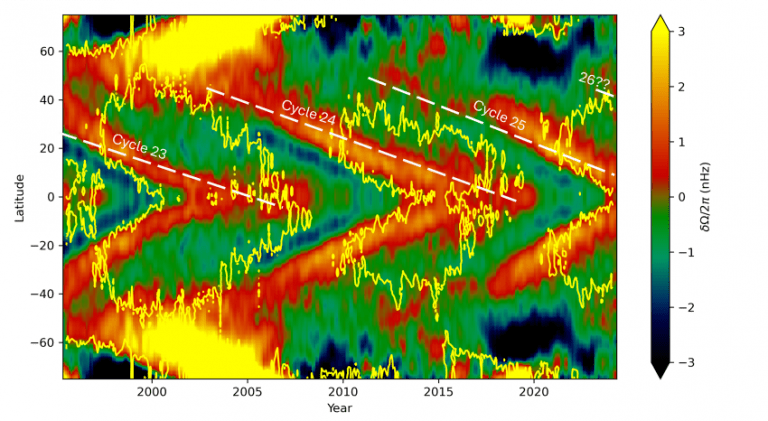The Sun, our closest star, is in the midst of an exciting and somewhat surprising development. While Solar Cycle 25 is still at its peak, researchers have identified early signs that Solar Cycle 26 may already be beginning, years before it was expected.
Solar cycles are the approximately 11-year periods during which the Sun’s magnetic activity increases and decreases. Each cycle is marked by the appearance of sunspots, solar flares, and coronal mass ejections (CMEs). Solar Cycle 25, which began in 2019, has been particularly active, with a notable increase in sunspots and other solar phenomena as it heads toward its peak in 2025. However, recent observations suggest that the Sun might be gearing up for its next act—Solar Cycle 26—even though the current cycle isn’t expected to end until the late 2020s.

The key to this discovery lies in the study of solar torsional oscillations, which are patterns of faster and slower rotations within the Sun, detected through a technique known as helioseismology. These oscillations can indicate the early stages of a new solar cycle. Researchers from the University of Birmingham have observed these oscillations at mid-latitudes on the Sun, suggesting that Solar Cycle 26 is starting to take shape beneath the surface.
The early emergence of Solar Cycle 26 while Cycle 25 is still ongoing raises new questions about how solar cycles interact. It challenges the traditional view that solar cycles are distinct and separate events, suggesting instead that there may be more overlap between cycles than previously thought. This could lead to a revision of the models used to predict solar behavior, potentially improving the accuracy of these predictions.



















